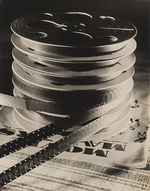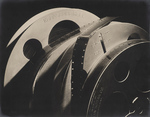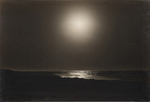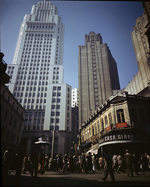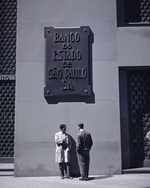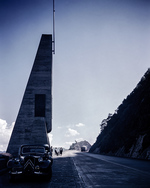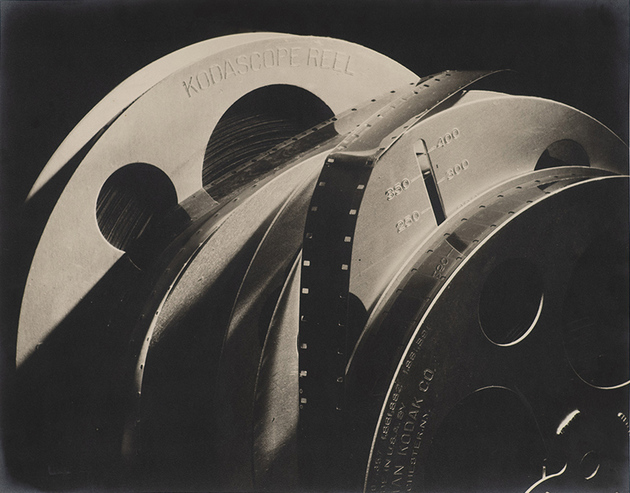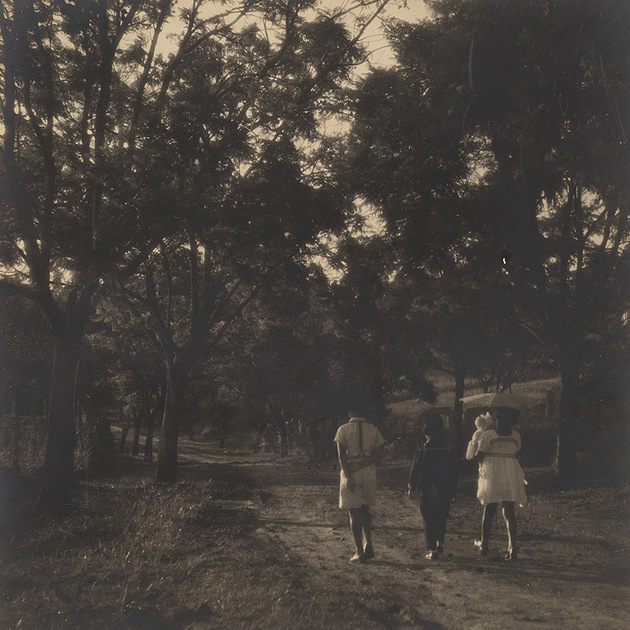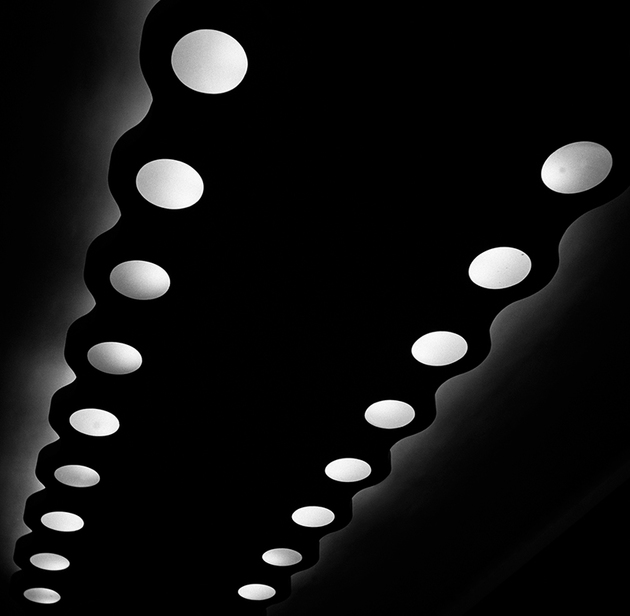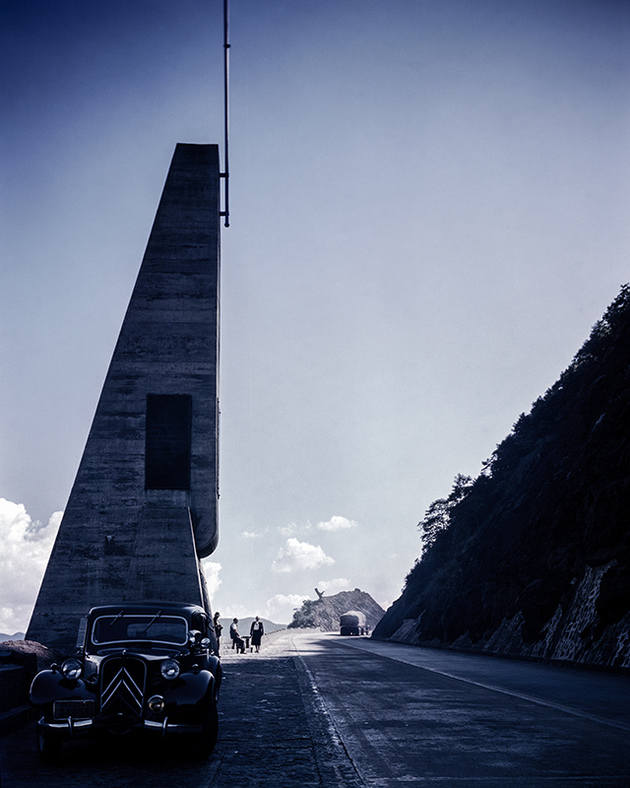Thomaz Farkas | Pictóricos, Coloridos e Modernos
Em setembro de 2024, o multifacetado artista Thomaz Farkas completaria 100 anos de idade. Para celebrar seu legado, a Luciana Brito Galeria apresenta a mostra "Thomaz Farkas: Pictóricos, Coloridos e Modernos", onde mais de 80 obras mostram uma faceta inusitada do artista, demonstrando como sua trajetória confunde-se com a própria evolução da fotografia no Brasil. Entre as décadas de 1940 e 1960, com um olhar sensível e afetuoso, ele realizou uma série de fotografias que revelam poeticamente tanto seu apreço pela cidade de São Paulo, quanto sua paixão pela então noiva Melanie Rechulski. A mostra compõe a programação especial "Viva Thomaz Farkas", juntamente com o Instituto Moreira Salles (São Paulo) e o Museu da Imagem e do Som (Fortaleza).
A exposição "Thomaz Farkas: Pictóricos, Coloridos, e Modernos" é composta por dois grandes núcleos. Dando início à mostra, ao entrar na Sala Modernista, encontra-se um conjunto de cerca de 60 fotografias vintages em preto e branco, reveladas e ampliadas pelo próprio artista no auge de sua produção, durante a década de 1940. Trata-se da maior seleção de fotografias vintages de Thomaz Farkas já mostradas ao público, sendo a maioria inédita, divididas cronologicamente em grupos temáticos. O primeiro expõe um conjunto de imagens de equipamentos fotográficos, realizadas pelo artista como exercícios em estúdio, antecipando-se ao grupo de fotografias da fase pictórica do artista, conceito que precede a fotografia moderna ao tentar aproximar-se da estética da pintura, sobretudo com registros de paisagens naturais e urbanas, além de retratos. Em seguida, vê-se vários trabalhos significativos que representam o ápice da sua experimentação formal, a partir da busca por novas formas de expressão visual, uso de técnicas inovadoras, que utiliza ângulos inusitados, iluminação natural e a atenção às possibilidades técnicas das câmeras e do laboratório fotográfico, fase que o posicionou como um dos precursores da fotografia moderna no Brasil. Ao final, a mostra reúne imagens icônicas que Thomaz Farkas realizou da cidade do Rio de Janeiro, além das suas experimentações surrealistas.
A década de 1940 ficou marcada por uma transformação na forma de se fazer fotografia no Brasil. O trabalho do Foto Cine Clube Bandeirante, criado em 1939, atribuiu à fotografia a condição de veículo artístico, transformando-a em uma nova janela para ver o mundo. Thomaz Farkas foi um dos protagonistas desse momento, com experimentações surrealistas de ângulos insólitos, e obras de espelhamento da vida cotidiana e da paisagem urbana, principalmente de São Paulo. Seu olhar sobre essa cidade revela a intimidade com a qual acompanhava o seu dia a dia e suas metamorfoses.
Já no Pavilhão da galeria, um conjunto de 17 fotos coloridas apresenta um conteúdo inédito e extraordinário. Durante a organização do acervo de Thomaz Farkas, onde mais de 34 mil fotos foram catalogadas pelo IMS-SP, descobriu-se uma seleção raríssima de filmes Kodachrome (Kodak) da década de 1940, formato 4 x 5 polegadas, em perfeito estado. Essas imagens demonstram um artista apaixonado por uma metrópole ainda sem poluição, com céu azul e vistas panorâmicas de ruas largas e menos ocupadas. Uma ode à arquitetura e aos paulistanos, sob um olhar romântico e intimista, que também serve como pano de fundo para as várias fotografias da então futura esposa Melanie Rechulski, cuja presença marcante contrasta com os muros, fachadas e outras paisagens urbanas da metrópole. Considerado épico pelos mais entendidos em fotografia, esse tipo de filme, para câmeras de grande formato, apresenta um alto padrão de qualidade das cores e texturas, extremamente complexo e de processamento difícil e caro, sendo descontinuado pela Kodak.
Além de figura central da fotografia no Brasil, Thomaz Farkas foi um entusiasta e defensor da nossa cultura. Também foi professor e exímio empresário, onde administrava a empresa da família, Fotóptica, lançando inclusive uma revista e inaugurando a primeira galeria especializada do Brasil. No cinema, contribuiu para ampliar a forma de se olhar o país, sendo uns dos primeiros a experimentar com documentários sobre a cultura popular brasileira, por meio do projeto "Caravana Farkas". Essas e outras facetas serão também contempladas pela programação "Viva Thomaz Farkas", no IMS-SP e MIS (Fortaleza).
abertura: 17 de agosto, das 12 às 17h
visitação: de 17/08/2024 a 28/09/2024
segunda, das 10h às 18h; terça à sexta, das 10h às 19h; sábado, das 11h às 17h
-
Luciana Brito Galeria
Avenida Nove de Julho 5162
São Paulo Brasil 55 11 3842 0634



